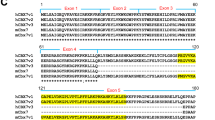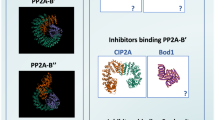Abstract
The p21-activated kinase (PAK) family of protein kinases has recently attracted considerable attention as an effector of Rho family of small G proteins and as an upstream regulator of MAPK signalling pathways during cellular events such as re-arrangement of the cytoskeleton and apoptosis. We have cloned a novel human PAK family kinase that has been designated as PAK5. PAK5 contains a CDC42/Rac1 interactive binding (CRIB) motif at the N-terminus and a Ste20-like kinase domain at the C-terminus. PAK5 is structurally most related to PAK4 and PAK6 to make up the PAK-II subfamily. We have shown that PAK5 preferentially binds to CDC42 in the presence of GTP and that CRIB motif is essential for this interaction. PAK5 is a functional protein kinase but unlike PAK-I family kinases (PAK1, 2, and 3), the kinase activity of PAK5 does not seem to require the binding of CDC42. Overexpression of PAK5 activates the JNK kinase pathway but not p38 or ERK pathways. PAK5 transcript is predominantly expressed in brain as revealed by Northern blot and in situ hybridization. The expression pattern of PAK5 is distinct from that of PAK4 and PAK6, suggesting a functional division among PAK-II subfamily kinases based on differential tissue distribution.
This is a preview of subscription content, access via your institution
Access options
Subscribe to this journal
Receive 50 print issues and online access
$259.00 per year
only $5.18 per issue
Buy this article
- Purchase on Springer Link
- Instant access to full article PDF
Prices may be subject to local taxes which are calculated during checkout





Similar content being viewed by others
References
Abo A, Qu J, Cammarano MS, Dan C, Fritsch A, Baud V, Belisle B, Minden A . 1998 EMBO J. 17: 6527–6540
Bagrodia S, Taylor SJ, Creasy CL, Chernoff J, Cerione RA . 1995a J. Biol. Chem. 270: 22731–22737
Bagrodia S, Derijard B, Davis RJ, Cerione RA . 1995b J. Biol. Chem. 270: 27995–28998
Bagrodia S, Cerione RA . 1999 Trends Cell Biol. 9: 350–355
Cau J, Faure S, Comps M, Delsert C, Morin N . 2001 J. Cell Biol. 155: 1029–1042
Dan C, Nath N, Liberto M, Minden A . 2002 Mol. Cell. Biol. 22: 567–577
Dan I, Watanabe NM, Kusumi A . 2001 Trends Cell Biol. 11: 220–230
Dieffenbach CW, Dveksler G . 1995 PCR Primer: A Laboratory Manual Cold Spring Harbor, NY: Cold Spring Harbor Laboratory
Frost JA, Steen H, Shapiro P, Lewis T, Ahn N, Shaw PE, Cobb MH . 1997 EMBO J. 16: 6426–6438
Gnesutta N, Qu J, Minden A . 2001 J. Biol. Chem. 276: 14414–14419
Jakobi R, Moertl E, Koeppel MA . 2001 J. Biol. Chem. 276: 16624–16634
Hanks SK, Hunter T . 1995 FASEB J. 9: 576–596
Khosravi-Far R, Solski PA, Clark GJ, Kinch MS, Der CJ . 1995 Mol. Cell. Biol. 15: 6443–6453
Melzig J, Rein KH, Schafer U, Pfister H, Jackle H, Heisenberg M, Raabe T . 1998 Curr. Biol. 8: 1223–1226
Nagase T, Ishikawa K, Kikuno R, Hirosawa M, Nomura N, Ohara O . 1999 DNA Res. 6: 337–345
Peri S, Pandey A . 2001 Trends Genet. 17: 685–687
Rudel T, Bokoch GM . 1997 Science 276: 1571–1574
Sambrook J, Russell DW . 2001 Molecular Cloning: A Laboratory Manual 3rd edn Cold Spring Harbor, NY: Cold Spring Harbor Laboratory
Schurmann A, Mooney AF, Sanders LC, Sells MA, Wang HG, Reed JC, Bokoch GM . 2000 Mol. Cell. Biol. 20: 453–461
Sells MA, Chernoff J . 1997 Trends Cell Biol. 7: 162–167
Tang Y, Zhou H, Chen A, Pittman RN, Field J . 2000 J. Biol. Chem. 275: 9106–9109
Yang F, Li X, Sharma M, Zarnegar M, Lim B, Sun Z . 2001 J. Biol. Chem. 276: 15345–15353
Zhang S, Han J, Sells MA, Chernoff J, Knaus UG, Ulevitch RJ, Bokoch GM . 1995 J. Biol. Chem. 270: 23934–23936
Acknowledgements
Work at the Center for Experimental Bioinformatics was supported by a generous grant from the Danish National Research Foundation. A Pandey was supported by a Howard Temin Award from the National Cancer Institute (CA 75447) and by a travel award from the Plasmid Foundation, Roskilde, Denmark.
Author information
Authors and Affiliations
Corresponding authors
Additional information
The human PAK5 cDNA sequence has been submitted to DDBJ/EMBL/GenBank (accession no. AB040812).
Rights and permissions
About this article
Cite this article
Pandey, A., Dan, I., Kristiansen, T. et al. Cloning and characterization of PAK5, a novel member of mammalianp21-activated kinase-II subfamily that is predominantly expressed in brain. Oncogene 21, 3939–3948 (2002). https://doi.org/10.1038/sj.onc.1205478
Received:
Revised:
Accepted:
Published:
Issue Date:
DOI: https://doi.org/10.1038/sj.onc.1205478
Keywords
This article is cited by
-
p21-Activated kinases as promising therapeutic targets in hematological malignancies
Leukemia (2022)
-
KinOrtho: a method for mapping human kinase orthologs across the tree of life and illuminating understudied kinases
BMC Bioinformatics (2021)
-
Proximity proteomics identifies PAK4 as a component of Afadin–Nectin junctions
Nature Communications (2021)
-
PAK5 promotes the migration and invasion of cervical cancer cells by phosphorylating SATB1
Cell Death & Differentiation (2019)
-
MiR-106a-5p inhibits the cell migration and invasion of renal cell carcinoma through targeting PAK5
Cell Death & Disease (2017)



